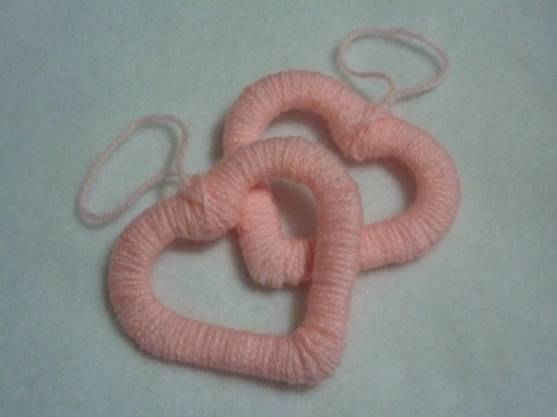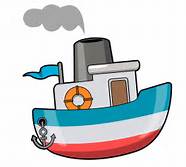
Salty Sam’s Fun Blog for Children
Number 295
The Earth’s Crust
Hello Everyone

This week, when l went over to the mainland, Bill and Bob were telling me about a science lesson they had in school recently.
My Auntie Alice had baked a big apple pie and they said that the crust on the top reminded them of it.
They said that the hot apple filling was just like the molten core of the Earth that was hiding under the solid crust. Auntie Alice thought that was a clever analogy (comparison).
While we were eating they decided to tell us all about what they had learnt…
The Earth’s crust is covering the Earth just like an apple peel covers an apple.
This crust is only about 35 km or 22 miles thick. Below this crust is molten larva.
The temperature is highest in the centre – probably about 6,000 degrees Celsius which is the same as the surface of the Sun.
The crust is essentially made up of rocks. The rocks are made from minerals and those minerals are made up from crystals. Crystals are constructed from distinctive chemical compounds.
Sometimes gems form. These stones are very highly-prized by humans and can cost a lot of money to buy, so you are very lucky if you find a hoard of them!
Precious and semi-precious gems come from crystals. They have regular shapes with parallel edges. They need to be cut carefully and then polished by experts to show their best beauty.
The hardest of all are diamonds. There are also rubies and emeralds and many more besides.
When scientists study the Earth’s crust, it gives them lots of indications of what has happened throughout the world’s history.
The history of movements of the rocks themselves and some of the creatures that have lived on Earth, in the form of fossils, are often buried beneath the soil or rocks.
The way that fossils form is very interesting.
When a living thing dies, it eventually rots away. Sometimes the space that is left is filled with sediment. This is compressed by weight of more rocks forming on the top over many, many years. A fossil is the mineral deposit of the shape of the dead animal or plant.
At the top of the layers is soil. lt is alive with tiny plants and animals. Soil is made from rocks worn down into tiny pieces by wind and water. Dead plants and animals enrich the soil. Plants use the minerals in the soil to make food.
Animals have always used rocks as tools. A large bird might drop a large stone onto the shell of an egg to break it open. A sea otter will rest a stone on top of its chest and whack a shell fish on top of it to try and break the shell fish open in order to eat it.
Man first made tools from stone at least 7,000 years ago. Flint was favourite because it split so easily. Flint had sharp edges that were of enormous use. Even tiny pieces could be split off from larger stones and used.
These flints could be used as axe heads, arrow heads, knives and scrapers. Flint tools may well have been the first things ever traded between different tribes.
Planet Earth has a solid, inner core which is 1,200 km across. There is a hot molten outer core wrapped around that and then a solid mantel surrounding that.
The Earth’s crust is a rocky wrapping on which we live and we have not explored more than a few kilometres down into it.
lt is the forces from within that have shaped the crust. Magna, which is a boiling mineral soup, can burst out of volcanoes and cracks in the surface of the Earth, forming new layers of rock when it cools. There are about 50 volcanic eruptions a year and 15 volcanoes are permanently active. The most active one in Europe is Mount Etna in Sicily and it is one of the most active volcanoes in the world.
About a tenth of the world’s population live near to a volcano that could erupt at any time. lt might seem strange that they do this, but the soil around volcanoes is very fertile and grows crops well. Before transport was well-developed people needed to grow their food where they lived.
The rocks that are formed from solidified magma are called igneous rocks. An example of an igneous rock is granite. lt is a very hard rock.
Sedimentary rock is rock that has been laid down in layers after particles have been transported by wind and water and then compacted down into solid rock.
There is a third type of rock called metamorphic rock. This rock has been transformed somehow, maybe under the influence of heat and pressure. An example of this rock is slate and a stunning rock called marble is created by rock being moved and folded and when it re-crystallizes it takes on beautiful patterns.
Rock can also become magma again.
Another kind of rock you can find on Earth actually comes from space. These rocks are called meteorites. They often hit the Earth, but a lot of them fall into the sea and are never seen by people.
Sometimes, huge solid plates that sit on the Earth’s surface push together to form mountain ranges. Sometimes, mountains are worn away by winds.
lf the winds carry sand in them, the action of the wind and the particles can erode stone over time completely changing a landscape.
Sometimes, rain or streams of water can erode rock as well. Softer rock can wash away and harder rock is left standing.
Sometimes temperature changes can modify rock. Water creeps into cracks, expands when it freezes and makes the cracks bigger.
Sometimes the sea collects sand and stones from one place and deposits it in another. This results in the coastline changing its shape.
All of these factors having an influence on the world’s surface; and this means that over many human lifetimes the surface of the land is always changing.
lf you ever visit a limestone cave, you will see water dripping from the ceiling.
These drops of water carry with them particles of limestone. Over long periods of time the particles stick together and create spikes that hang from the ceiling.
These are called stalactites.
As the water splashes onto the cave floor, it deposits more rock and spikes build up creating stalagmites. lf the stalactite and the stalagmite eventually touch each other, they form a strut reaching from ceiling to floor and this is called an organ pipe.
Limestone is sometimes used to make beautiful buildings and as it often contains sea shells – the shells can actually be seen in the walls.
Rocks and minerals are being used by humans all the time. They are being constantly mined and used in the building and manufacturing industries.
As these resources are depleted (being used up), people are looking to find more in new places. lt is thought that there are many mineral deposits under the sea and some people even plan to land space ships on comets and then they will collect valuable minerals that they can sell.
This money will pay for the project and generate huge profits – hopefully.
We see minerals used in objects around us.
Mercury is used in telescopes and thermometers to indicate temperature.
Aluminium is used to make drinks cans, coins (in some countries), cooking utensils, building materials and vehicles. Graphite is used in pencils. Crystals are put in watches and silicone is put in computer chips.
Gold and silver are also minerals.
The Earth has finite resources. That means they can all be used up.
This is why it is important to recycle whenever we can. Do you do that?
Bye bye everyone – don’t forget to subscribe to my blog!
lf you like my blog, please support it by telling all your friends and followers about it.
Thank you!
And see you again next Fun Friday!
Love and kisses
Salty Sam

www.christina-sinclair.com


Bill and Bob’s Joke of the Week![]()
![]()
Bill: Bob, do you know the name of the man who drew the first world atlas?
Bob: l don’t think l do, no.
Bill: His name was Joe Graffee.

Salty Sam © Christina Sinclair 2015
Unauthorized use and/or duplication of material from this blog without express and written permission from this blog’s author and owner is strictly prohibited.
Links may be used to www.christina-sinclair.com

Picture Gallery
 The Earth – a cross section
The Earth – a cross section
 Igneous rock
Igneous rock
 Sedimentary rock
Sedimentary rock
 Metamorphic rock
Metamorphic rock
 Stalactites and organ pipes with a few stalagmites on the floor
Stalactites and organ pipes with a few stalagmites on the floor
 Monument Valley has wind eroded structures
Monument Valley has wind eroded structures
(lovethesepics.com)
 Sugarloaf Mountain was created by eroding winds
Sugarloaf Mountain was created by eroding winds
 Dartmoor Tors are harder stones emerging from softer ones through erosion
Dartmoor Tors are harder stones emerging from softer ones through erosion
(Huffingtonpost.com)
 The Grand Canyon (sandstone and limestone) was created by the erosion of water
The Grand Canyon (sandstone and limestone) was created by the erosion of water


 THE SALTY SAM NEWS DESK
THE SALTY SAM NEWS DESK

This week we have another of Bill and Bob’s quizzes for you.
The weather wasn’t too good these last few days in Rocky Bay and they didn’t want to play outside, so they decided to stay inside and make a quiz for you instead.
They drew inspiration from an English lesson they had recently and Auntie Alice gave them some help too.
There are many different ways to travel around the world.
Do you know what these travel-inspire idioms mean?
- To push the boat out
- On your bike
- To abandon a sinking ship
- To sail through
- A train of thought
- Taking off
- Ships in the night
- In the same boat
- To run out of steam
- When your ship comes in


*********************
TO ADVERTISE ON THIS BLOG
PLEASE CONTACT:
christina.sinclair.ads@aol.co.uk
*********************


Quick Quiz
Lots of children like to start learning how to cook by trying out baking recipes.
ln a way, baking is more difficult than other types of cooking because measurements, timings and temperatures must be precise in order for the outcome of a recipe to be successful.
lf you try to make a recipe and it does not turn out to be very nice, don’t be disheartened.
Think about what went wrong and learn from your mistakes.
lt might even be that there was a mistake printed in the recipe – it does happen!
Answer these questions to improve your baking skills!
- Why should you use eggs that are at room temperature?
- How can you test the freshness of eggs?
- Why should you take butter out of the fridge 30 minutes before cooking, if you need to cream it with sugar?
- Why should you break egg shells on a flat surface and not the edge of a bowl?
- How can you easily measure sticky substances?
- Why should you check where your bake should be positioned in the oven and put the oven shelves in the right place before you pre-heat the oven?
- Why should you not twist a scone or cookie cutter when you press it down into dough?
- Why should you never open the oven door before three quarters of the cooking time is up?
- How should you position a cake to cover it with icing?
- How can you cut a cake cleanly?

Scones



lt’s the Weekend!

HOW TO MAKE A HEART ORNAMENT
This is really easy to make. If you have a Christmas tree with an unusual colour scheme and it is difficult to find ornaments to match in, making your own ornaments means you can have them any colour you like.
Just cut out a piece of card in a heart-shaped ring.
The card used to make the heart in the photograph is 1cm wide.

Snip just the tip of the inner point at the top off.
Wrap yarn around the heart working your way around three times.
Finish by making a loop at the top.
You could hang a little ornament or necklace in the middle of the heart so that it dangles in the centre.

Please note that the material on this blog is for personal use and for use in classrooms only.
It is a copyright infringement and, therefore, illegal under international law to sell items made with these patterns.
Use of the toys and projects is at your own risk.
©Christina Sinclair Designs 2015

Answers to the News Desk Quiz
- To push the boat out – to spend a lot of money on something, especially a celebration party
- On your bike – telling someone to go away
- To abandon a sinking ship – to leave a project that is not working
- To sail through – to find something very easy to do – like an examination
- A train of thought – one thought that comes after another and is connected
- Taking off – something is becoming successful
- Ships in the night – people that meet up for only a short period of time
- In the same boat – people who find themselves in the same position
- To run out of steam – to run out of energy
- When your ship comes in – a time when you will have good luck – maybe a good result from a clever investment



Quick Quiz Answers
- Why should you use eggs that are at room temperature?
They can be whisked more easily giving a light, airy texture.
- How can you test the freshness of eggs?
lf an egg sinks in water, it is fresh and if it floats, it is not so fresh.
- Why should you take butter out of the fridge 30 minutes before cooking, if you need to cream it with sugar?
lf a recipe requires softened butter, you should not use very cold butter. Soft butter creams more easily with sugar to give a mixture a light, fluffy texture.
- Why should you break egg shells on a flat surface and not the edge of a bowl?
lt will mean that you are less likely to get shards of shell in your mixing bowl. lf you do get pieces of egg shell in the egg in the bowl, try to fish it out with a half of the egg shell – it will probably stick to a the shell more easily than a spoon – or maybe use a wet finger.
- How can you easily measure sticky substances?
Spray a light coating of oil on your spoon before you measure out sticky substances like honey.
- Why should you check where your bake should be positioned in the oven and put the oven shelves in the right place before you pre-heat the oven?
lt is usually very important where you position a bake in the oven because the temperature is different in different places. A good recipe will tell you where to put your bake. lt will be much easier to set up the shelves in the right place while they are still cold. You need to pre-heat an oven before using it for baking – that means bringing it up to the right temperature so that the bake is at the same temperature for the whole time it is in the oven.
- Why should you not twist a scone or cookie cutter when you press it down into dough?
lf you twist the cutter, it will seem easier to get down to the bottom of the dough but you will bind the edges together and this will stop you getting a good rise in the oven. So push the cutter down and then remove it without twisting it.
- Why should you never open the oven door before three quarters of the cooking time is up?
lf you open the oven door, the temperature will fall dramatically and this may have a disastrous effect on your bake. Let pastry, cookies and cakes rest on a baking tray for a while after you take them out of the oven before you put them onto a cooling rack.
Quiches are much easier to cut after they have been resting for at least ten minutes after being taken out of the oven.
- How should you position a cake to cover it with icing?
Put it on the serving plate, once it has cooled, with strips of baking parchment under just the edges of the cake. Cover the cake with icing and when you are happy with your work, just pull the strips of paper away. The plate should be clean. lf you move a cake to a different place after it has been iced, it could crack.
- How can you cut a cake cleanly?
Put your knife into a jug of hot water. Wipe it dry and put cut a slice of cake. You should get a nice clean slice to serve to someone.




Great looking blog and fantastic content!
Thank you very much for that lovely comment! 🙂